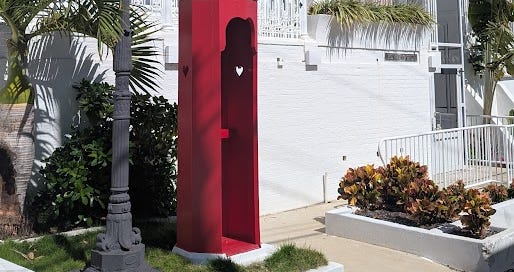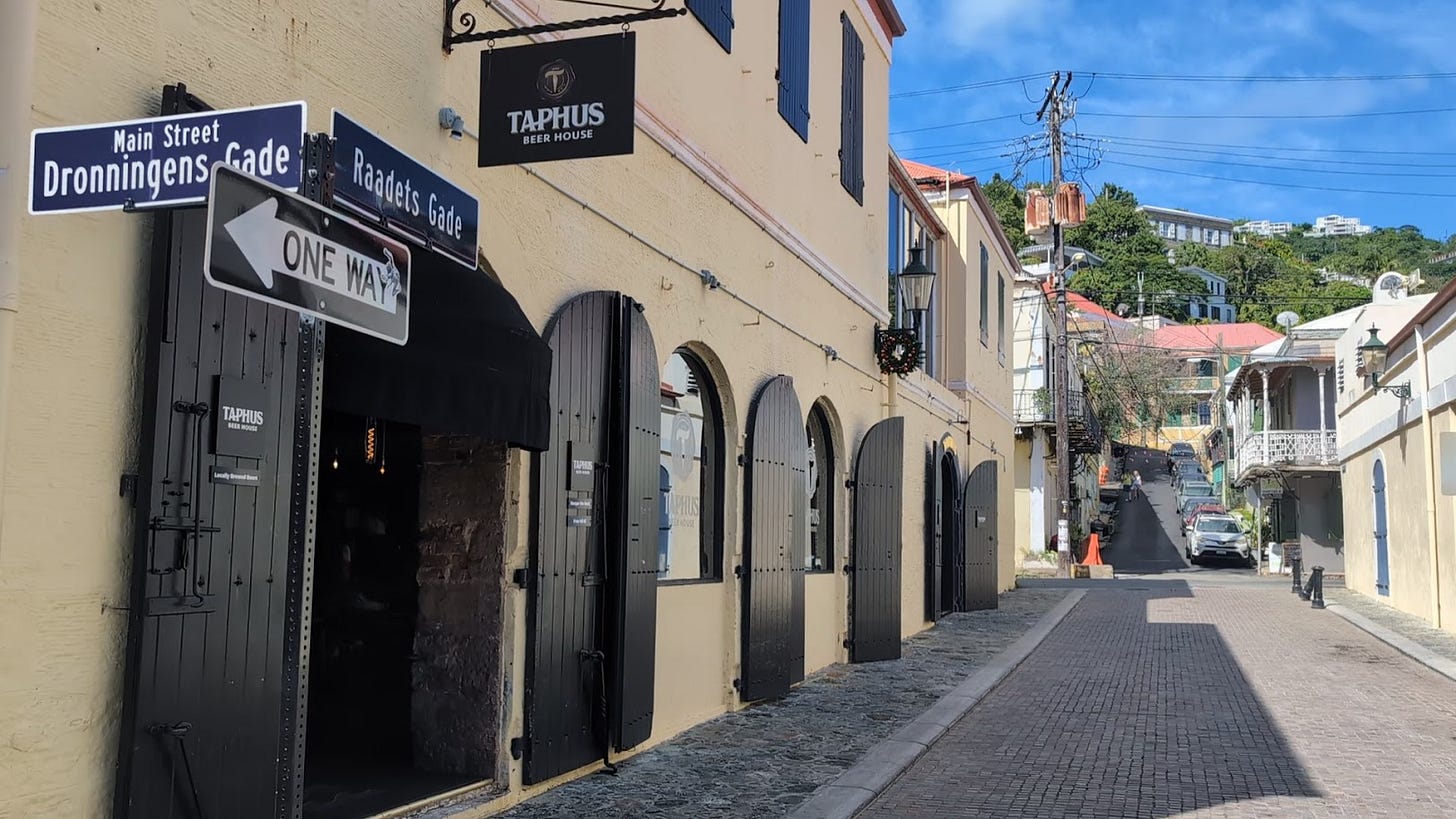When we think of European empires in the Caribbean, the usual suspects come to mind: Spain, Britain, France, and the Netherlands. But one small nation also carved out a legacy in the region—Denmark. The islands now known as the U.S. Virgin Islands were once a vital piece of Denmark’s empire, De Danske Kolonier.
Denmark’s journey into empire-building began in the Baltic and North Sea as part of the Kalmar Union, established in 1397. This alliance united Denmark, Sweden, and Norway under one monarch, with the goal of strengthening Scandinavian influence in northern Europe. Much of this period was defined by Denmark’s rivalry with the Hanseatic League, a powerful coalition of northern European merchant guilds. The League controlled key trade routes in the Baltic and North Seas, but Denmark, under the Kalmar Union, sought to undermine their dominance. Through tolls, taxes, and military confrontations, Denmark weakened the League, which eventually collapsed due to the rise of centralized states and shifting trade patterns.
However, without the unifying purpose of a common enemy, the Kalmar Union unraveled. Denmark and Sweden, once allies, became rivals. Tensions reached a boiling point in 1520 with the Stockholm Bloodbath, where Danish King Christian II executed Swedish nobles, inciting rebellion. By 1523, Sweden left the union, solidifying its independence under King Gustav Vasa. This split marked the rise of Denmark-Norway, a dual kingdom ruled from Copenhagen, where Denmark dominated economically and politically.
Denmark emerged from this tumultuous period as a significant power in Baltic trade, buoyed by one of Europe’s largest navies. As mercantilism—the idea that a nation’s wealth depended on exporting more than it imported—gained traction, Denmark sought colonies to secure valuable resources and reduce reliance on foreign markets. Denmark’s first colonial venture was in India, where they established a trading post in Tranquebar in 1620. Their focus later shifted to West Africa, where Danish ambitions were fueled by an unlikely figure: Hendrik Carloff, a Finnish merchant and former soldier. Carloff, snubbed by Sweden after helping them capture a fort, offered Denmark the ultimate revenge move: he would take the fort back and deliver it to them.
In 1659, during a war between Denmark and Sweden, Carloff delivered on his promise, capturing the fort and renaming it Fort Carolusburg. This marked the beginning of Danish control in West Africa and their entry into the lucrative transatlantic trade. With access to enslaved labor from West Africa, Denmark’s ambitions turned to the Caribbean, where sugar plantations offered enormous profits.
Denmark’s first attempt to establish a Caribbean colony in 1665, led by Erik Smit, was plagued by disaster. Storms battered the expedition, English privateers raided their ships, and Smit himself died of illness. The remaining settlers, stranded and leaderless, founded the settlement of Taphus—named after the Danish word for “drinking establishment.” Despite its rough beginnings, Taphus became a stop for pirates and privateers, cementing its reputation as a hub of lawlessness.
Denmark made a second attempt in 1671, chartering the Danish West India Company to establish a settlement on St. Thomas. The company sent 190 settlers, including indentured servants, former prostitutes, and convicts, to colonize the island. However, the colony struggled. Many died during the crossing or shortly after arriving, leaving just 29 settlers alive within a year. To sustain the colony, Denmark leased parts of the island to Brandenburg, a rising German power. Yet tensions over heavy taxes strained the relationship, and Brandenburg eventually abandoned its Caribbean ambitions.
As Denmark established itself on St. Thomas, the island became a key hub for the transatlantic slave trade. Charlotte Amalie, the capital, developed into a bustling port where enslaved Africans were sold to plantation owners across the Caribbean. Like many colonies, St. Thomas relied heavily on sugar plantations, which were labor-intensive and depended on enslaved workers. The island’s hilly terrain made sugar cultivation difficult, leading the Danes to cut terraces into the hillsides.
The conditions for enslaved people on Danish plantations were brutal, as they were across the Caribbean. However, the arrival of Moravian missionaries in 1727 began to challenge the status quo. These missionaries advocated for better treatment of enslaved Africans, providing education and Christian teachings. The Moravians often lived under similar conditions to the enslaved, demonstrating solidarity that plantation owners found deeply threatening. While they were unable to dismantle the system of slavery, their work laid the groundwork for abolitionist ideals in the Danish colonies.
By the late 18th century, abolitionist sentiments were taking hold in Denmark. In 1792, King Christian VII declared that the transatlantic slave trade would be banned, though the law did not take effect until 1803. While this made Denmark one of the first nations to outlaw the slave trade, it did not end slavery itself in the colonies. Other nations, including Britain (1833) and France (1848), began to abolish slavery entirely, putting pressure on Denmark to follow suit.
In the Danish Virgin Islands, Governor Peter von Scholten became a central figure in the push for abolition. Von Scholten’s relationship with Anna Heegaard, a formerly enslaved woman who lived openly with him on St. Croix, likely influenced his views. Despite resistance from Copenhagen, von Scholten advocated for the end of slavery. The Danish crown proposed a gradual emancipation plan, freeing the children of enslaved parents while leaving the rest enslaved indefinitely.
This half-measure sparked an uprising in 1848, when thousands of enslaved and formerly enslaved people gathered outside Fort Frederik on St. Croix, demanding immediate freedom. Recognizing the futility of suppressing the revolt, von Scholten declared the abolition of slavery in the Danish West Indies on July 3, 1848, without the crown’s approval. While his actions secured freedom for the enslaved, they ended his career. Von Scholten returned to Denmark in disgrace, where he lived out the rest of his life in obscurity.
Denmark struggled to maintain its Caribbean colonies after abolition. The islands’ plantation economy declined, and the strategic importance of the Virgin Islands began to wane. The United States, interested in the islands as a defensive buffer near the Panama Canal, expressed interest in purchasing them as early as 1866. A referendum held in 1868 showed strong support for a sale among islanders, but the deal fell through.
It wasn’t until World War I, amid fears of German expansion, that the U.S. finalized the purchase. In 1917, Denmark sold the Virgin Islands to the United States for $25 million in gold. The transfer, completed on March 31, 1917, marked the end of Denmark’s Caribbean ambitions.
Denmark’s role in the Caribbean may be overshadowed by larger colonial powers, but its legacy endures. From the bustling slave markets of Charlotte Amalie to the abolitionist efforts of Peter von Scholten and the Moravians, Denmark’s Caribbean history is a complex tale of ambition, exploitation, and moral reckoning. Today, the U.S. Virgin Islands reflect this layered heritage, blending Danish influence, African resilience, and American identity.
And, of course, the pirates and privateers who once frequented these islands have been rebranded as quirky tourist attractions—a nod to the island’s wilder days under Danish rule.








How interesting, I had no idea about any of this. And very relevant with Trump's recent antics!